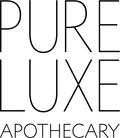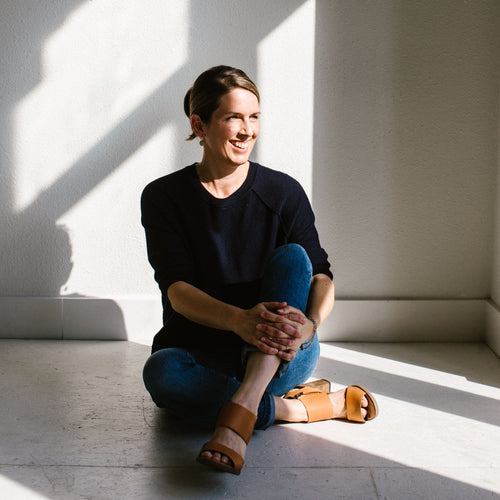Nutrition is one of the most important foundations of holistic health.
What we put in our body literally impacts everything - our mood and energy, immune function, gut function, heart function, brain, skin, and everything in between. And eating an abundance of nutrient-rich plants is one of the most important tools we have to shape our own wellbeing.
Did you know rhubarb is a powerhouse of nutrition?
Read on to learn more about this culinary AND medicinal plant - and one of my favorite hallmarks of spring in my Midwest garden!

One of the 2 year-old rhubarb starts in my garden ... 20 plants and counting!
About the Plant
Rhubarb (scientific name: Rheum rhabarbarum) is actually native to Asia, including China, Mongolia, and Siberia, even though it’s a common garden plant across cooler climates in the US and Europe. It dies back each winter and comes up each spring, making it an herbaceous perennial. And it’s actually classified as a vegetable, even though it's commonly used like a fruit in sweet desserts and has the nickname ‘pie plant’.
It’s not related to celery (that’s in a different plant family), despite the similar appearance of its fibrous stalks! And it's the stalks that are edible - the leaves are toxic due to their high oxalic acid content.
More Than Just Dessert
Historically, rhubarb has been used as medicine far longer than it’s been used as dessert. It’s been part of traditional Chinese medicine for at least 5,000 years - dating as far back as 2800 BC - which primarily used the roots and rhizome for gastrointestinal and liver issues.
In Ayurvedic medicine, which originated in India about 3,000 years ago, rhubarb is used similarly for treating digestive concerns. It’s categorized as a bitter herb with detoxifying properties that support the liver and gallbladder.
Trade Route to America
Due to its valuable medicinal properties, the trade route known as the Silk Road spread rhubarb roots through Turkey, Europe and beyond. By the 1500s in France, rhubarb was reportedly ten times more expensive than cinnamon and four times more expensive than saffron.
In North America, there are records of rhubarb being grown both for medicinal and culinary uses in the early 1700s, though it wasn’t until 1828 that rhubarb first appeared in US seed catalogs. And according to author John Forti, in the late 1800s “its rise in popularity coincided with the falling price of sugar, which made the tart rhubarb more palatable to the masses.”

A harvest from one of my well established rhubarb plants this spring.
Why Eating Rhubarb is Good for the Body and Skin
Rhubarb is packed with vitamins, minerals, and phytochemicals that support our health. Here are just a few properties to note about its edible stalks:
-
High in antioxidants, which help fight free-radicals in the body (important anti-cancer properties)
-
High in vitamin K, which is critical for bone health and wound healing
-
High in fiber, which is helpful for maintaining healthy cholesterol levels, heart health, and gut health
-
Antibacterial and anti-inflammatory, with an especially significant impact on the gut microbiome
- Rich in phytochemicals like anthocyanins and lycopene - which help support the immune system, help prevent cancer, protect the brain, and support heart health
When working with rhubarb, remember:
🚫 Leaves = toxic (do not ingest)
✅ Stalks = edible and nutritious
✅ Roots/rhizomes = used in traditional medicine
My Favorite Easy-to-Make Rhubarb Recipe
With an abundance of rhubarb in my garden, I look for recipes that are easy and quick to make AND pack a punch in terms of health benefits. My favorite lately is Strawberry-Rhubarb Compote served over Chia Pudding. This combo is packed with fiber, protein, healthy fat, and numerous beneficial nutrients.
🥄 Strawberry-Rhubarb Compote
Ingredients:
2 cups chopped strawberries
2 cups chopped rhubarb stalks
1/3 cup sugar
- Stir all ingredients together in a saucepan, and then let the mixture sit for about 10 minutes (juices will start to release).
- Bring mixture to a light boil over medium heat. Once it starts to boil, reduce and simmer for about 20 minutes and stir every few minutes. The mixture will break down and thicken as it cooks, and it'll thicken a little more once it cools. Store in a sealed container in the fridge for about a week (if it lasts that long!).

Chopped and ready for the saucepan.
🥄 Chia Pudding
Ingredients:
2 tablespoons chia seeds
1/2 cup milk (I always use coconut milk)
a sprinkle of cinnamon
Directions:
- Stir ingredients together in a lidded glass container, being sure to break up any clumps of chia seeds.
- Let the mixture sit in the fridge for at least 2 hours, but ideally overnight.
- Top with rhubarb compote or your favorites berries and enjoy!

I make several containers of this at once, so they're ready to eat throughout the week.

The final product: compote over chia pudding. Makes a gorgeous breakfast!
Other ideas for using this beautiful spring vegetable:
- Roast or grill rhubarb with a drizzle of honey
- Add to smoothies or juices
- Create a tangy sauce to accompany meat
- Simmer into a compote with other fruit and berries
- Bake into pies, crumbles, crisps, cakes, or muffins (though watch the sugar levels!)
A quick search through Pinterest will pull up a wide range of interesting recipes to experiment with. Keep in mind that refined sugar can negate many of the health benefits of rhubarb, so minimize the sweets for optimal nutrition.
Further Reading:
Growing RhubarbWhat We Already Know About Rhubarb: A Comprehensive Review
What Are Phytochemicals?
*****
Using 100% natural ingredients, I formulate clean skincare + wellness products to help you live your healthiest, most vibrant life. Handmade in small batches, these blends are holistic, healing, and sooo lovely to use!
Pure Luxe Apothecary products are always: synthetic-free, preservative-free, paraben-free, additive-free, colorant-free, cruelty-free, gluten-free, and stress-free.
Cheers to good health and happy skin!


